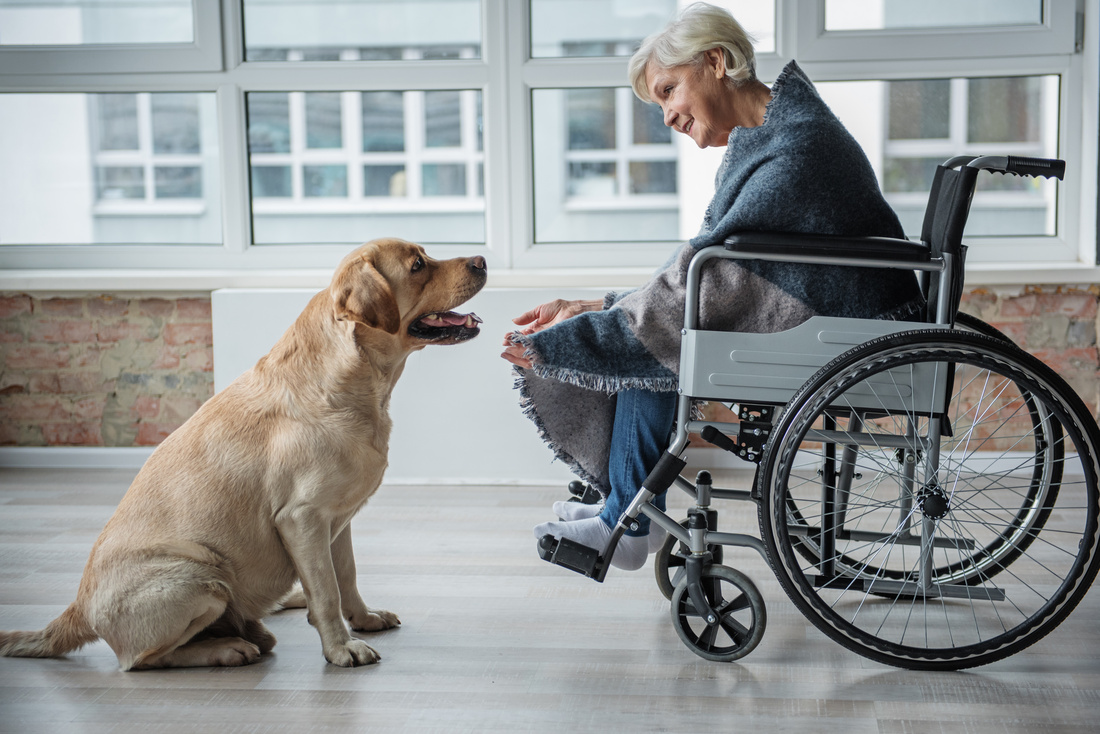
Pet Therapy Has Many Benefits Including Pain Reduction
Most people find interaction with animals to be a very pleasurable activity. Mounting evidence on human/animal interactions in animal assisted therapy, also known as pet therapy, shows it can do a lot more, improving both mental and physiological measures in the acutely and chronically ill. Among those benefits is pain reduction.
Fibromyalgia and Pet Therapy
A study published last month by the Mayo Clinic found that patients with fibromyalgia benefited both physically and emotionally from contact with therapy dogs. This was a randomized, controlled study of 221 participants. The treatment group received a 20-minute session with a certified therapy dog and its handler, while the control group met for 20 minutes with just the dog’s handler. Physiological markers were measured, including salivary cortisol, oxycontin concentration and heart rate. Pain and mood-based questionnaires were also administered. All measures significantly improved in the treatment group compared to the control group.
Numerous Other Studies Show Health Benefits of Pet Therapy
 This is just the latest of many studies that have shown that animal-assisted therapy (AAA) can improve health and mood in people who have chronic illness or are elderly. Studies have looked at the benefits of dogs, cats, horses, birds and even manufactured simulations of animals. These studies noted improvements in depression, blood pressure and dementia symptoms. Dog ownership, in particular, was associated with more physical activity, which tends to help with pain and mood. Pet ownership by elderly persons preserves the ability to perform acts of daily living and even lowers triglycerides, and increases survival time in patients with arrythmias and congestive heart failure, according to other studies.
This is just the latest of many studies that have shown that animal-assisted therapy (AAA) can improve health and mood in people who have chronic illness or are elderly. Studies have looked at the benefits of dogs, cats, horses, birds and even manufactured simulations of animals. These studies noted improvements in depression, blood pressure and dementia symptoms. Dog ownership, in particular, was associated with more physical activity, which tends to help with pain and mood. Pet ownership by elderly persons preserves the ability to perform acts of daily living and even lowers triglycerides, and increases survival time in patients with arrythmias and congestive heart failure, according to other studies.
More Studies on Animal-Assisted Therapy for Chronic Pain
A 2019 randomized controlled study of elderly people with chronic joint pain who were taking multiple medications (polypharmacy) and participating in a group exercise program found that those who did the exercises in the presence of a therapy dog had a significant reduction in pain perception and pain induced insomnia compared to the control group. The difference was especially profound in those participants who had highest baseline pain severity.
Another study, published in 2015, found that patients who had total joint replacement who had a 15 minute visit with a therapy dog prior to their physical therapy sessions during their hospital stay reported significantly reduced pain levels compared to the control group of patients who received only physical therapy.
A 2019 study of equine-assisted therapy (therapy with horses) for older adults with arthritis found improvements in back pain, shoulder pain and hip pain as well as increased range of motion in back, hips and shoulders. Mood also improved.
A 2012 study of fibromyalgia patients visiting an outpatient clinic found that those who spent their wait time with a therapy dog had significant improvements in pain, mood and other measures of distress compared to a waiting room only control group.
 Most studies have focused on dogs in clinical settings. Dogs are more amenable to being out and about compared to other animals, including cats. However, as someone who shares my home with several cats, I can attest to their therapeutic value when dealing with acute and chronic pain.
Most studies have focused on dogs in clinical settings. Dogs are more amenable to being out and about compared to other animals, including cats. However, as someone who shares my home with several cats, I can attest to their therapeutic value when dealing with acute and chronic pain.
Many years ago, I sprained a muscle in my left hip. The pain was so severe that for three weeks I barely slept. One of my cats at the time was a beautiful but very nervous calico cat named Ellie. During the time that my hip pain was very severe, Ellie took to sleeping on my left hip as I laid on my right side. When my hip started feeling better, she stopped sleeping on it. Her sensitivity and apparent concern were very comforting during that challenging time.
Two years ago, I broke my ankle and had to have surgery. During the recuperative period when I was non-weightbearing and lying around a lot, my cat Maggie, a friendly calico/tabby mix, rarely left my side. As I got better and more active, she returned to her more independent self.
As a psychotherapist with a home office, I’ve often seen my cats give special attention to my clients at times when they were especially emotionally distressed or hurting in some other way.
Possible Adverse Effects of Pet Therapy
Potential negative consequences of pet ownership include increased risk of falling (i.e. tripping over pets), possible transmission of infections, and the stress of the financial burden or eventual loss of a pet.
Conclusions
Pain management can be fun! Spend as much time as you can with animals to reduce pain and improve mood and overall health.
We'd love the hear your thoughts and about your experiences with the healing power of pets Please comment and share!
The author, Cindy Perlin, is a Licensed Clinical Social Worker, certified biofeedback practitioner and chronic pain survivor. She is the founder and CEO of the Alternative Pain Treatment Directory and the author of The Truth About Chronic Pain Treatments: The Best and Worst Strategies for Becoming Pain Free. She's located in the Albany, NY area, where she has been helping people improve their health and emotional well-being for over 30 years, currently along with her four cat co-therapists. See her provider profile HERE. She is also available for phone and zoom consultations, Find more information HERE











Comments